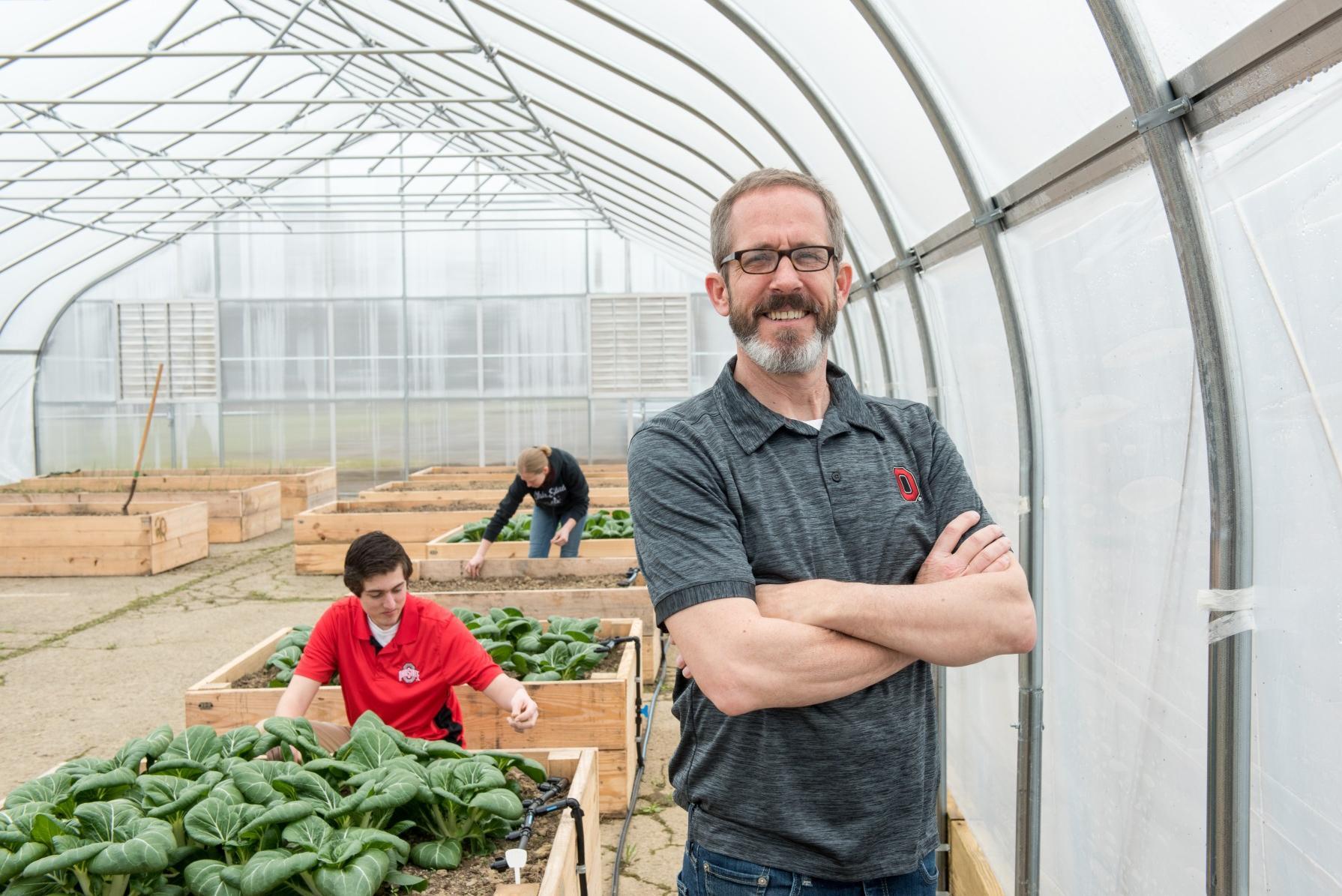News — March 11, 2025
Ohio State Professor’s Microfarm Model Reshapes Urban Agriculture
“We didn’t just build a farm—we built a system that any community can adopt to change how they grow and access food.”
COLUMBUS, Ohio — A groundbreaking farming model developed at The Ohio State University is proving that small farms can thrive—and communities across Ohio are taking notice.
Kip Curtis, PhD, associate professor of environmental history at The Ohio State University at Mansfield, has created a microfarm system that turns small-scale urban farms into profitable, cooperative networks. What started as a bold experiment in Mansfield is now expanding, with new farm cooperatives launching in Marion and beyond.
“There was a lot of activism and funding in the space, but little guidance on how to make small farms financially sustainable,” Curtis said.

His solution: a standardized microfarm that balances size and output, ensuring a farmer can generate at least $30,000 in net income. By linking multiple farms into a farmer-owned cooperative, which will manage the marketing strategy for its members, his model provides the stability and market access that small farms often lack. In addition, Curtis plans to provide long-term consulting, training modules and access to cutting-edge research to ensure the viability and growth of each microfarm.
The concept became reality in 2019 when Curtis secured a $2 million matching grant from the Foundation for Food and Agricultural Research to pilot the idea in Mansfield, leading to the creation of Richland Gro-Op, a fully operational farm cooperative. As word spread, Ohio State backed a second launch in Marion, which sparked interest from other communities.
“The demand became clear when communities started reaching out, asking how they could replicate what we built in Mansfield,” Curtis said.
To scale the initiative, Curtis disclosed the microfarm program to Ohio State’s technology transfer office, Innovation and Commercialization. The licensing team continues to work closely with Curtis to develop a plan to commercialize the program with the goal of producing positive social impact as well as long-term financial sustainability. Curtis also presented the microfarm idea to the College of Arts and Sciences’ Technology Oversight Committee. The committee members, all Ohio State alumni, provided input on his commercialization plans. Since the initial presentation, several members have met separately with Curtis and continue to provide guidance.
“This is a social justice project,” Curtis said. “We’re working in food deserts and economically challenged communities because small farming is an accessible path to financial independence.”
His work is part of a larger wave of innovation at Ohio State’s College of Arts and Sciences, where invention disclosures, patent activity and startup creation have surged. Curtis credits the university’s support for entrepreneurial research.
“My department and leadership gave me the space to pursue external funding and develop real-world solutions,” he said. “We’re not just studying history—we’re using it to create systems that change lives.”